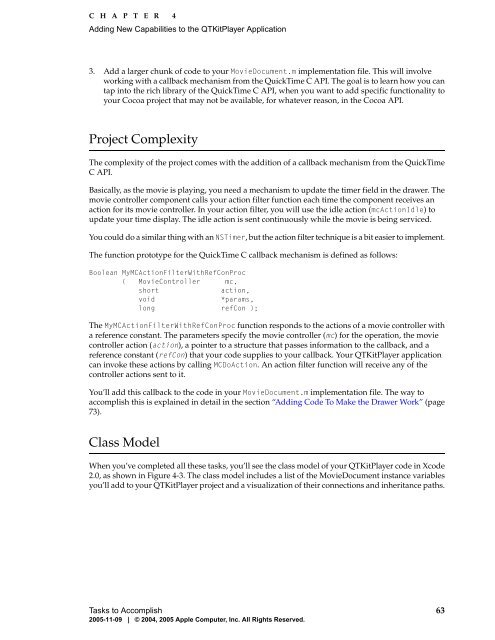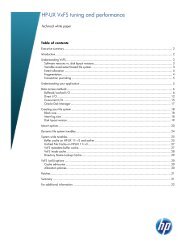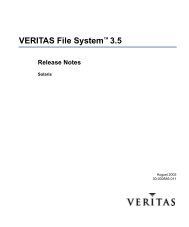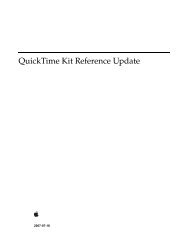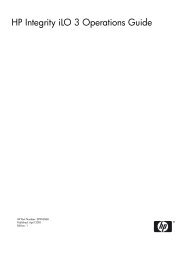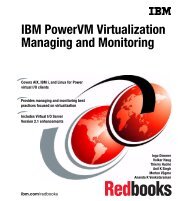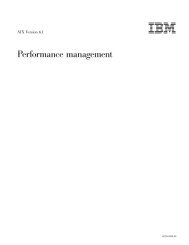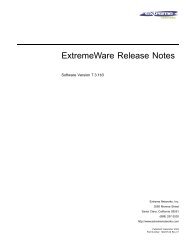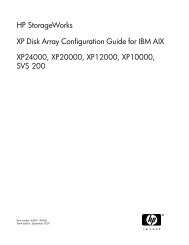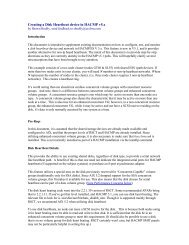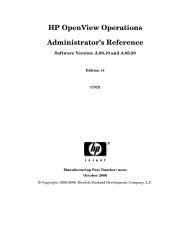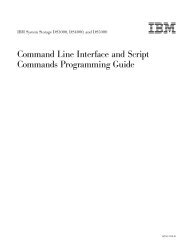QuickTime Kit Programming Guide - filibeto.org
QuickTime Kit Programming Guide - filibeto.org
QuickTime Kit Programming Guide - filibeto.org
Create successful ePaper yourself
Turn your PDF publications into a flip-book with our unique Google optimized e-Paper software.
C H A P T E R 4<br />
Adding New Capabilities to the QT<strong>Kit</strong>Player Application<br />
3. Add a larger chunk of code to your MovieDocument.m implementation file. This will involve<br />
working with a callback mechanism from the <strong>QuickTime</strong> C API. The goal is to learn how you can<br />
tap into the rich library of the <strong>QuickTime</strong> C API, when you want to add specific functionality to<br />
your Cocoa project that may not be available, for whatever reason, in the Cocoa API.<br />
Project Complexity<br />
The complexity of the project comes with the addition of a callback mechanism from the <strong>QuickTime</strong><br />
C API.<br />
Basically, as the movie is playing, you need a mechanism to update the timer field in the drawer. The<br />
movie controller component calls your action filter function each time the component receives an<br />
action for its movie controller. In your action filter, you will use the idle action (mcActionIdle) to<br />
update your time display. The idle action is sent continuously while the movie is being serviced.<br />
You could do a similar thing with an NSTimer, but the action filter technique is a bit easier to implement.<br />
The function prototype for the <strong>QuickTime</strong> C callback mechanism is defined as follows:<br />
Boolean MyMCActionFilterWithRefConProc<br />
( MovieController mc,<br />
short action,<br />
void *params,<br />
long refCon );<br />
The MyMCActionFilterWithRefConProc function responds to the actions of a movie controller with<br />
a reference constant. The parameters specify the movie controller (mc) for the operation, the movie<br />
controller action (action), a pointer to a structure that passes information to the callback, and a<br />
reference constant (refCon) that your code supplies to your callback. Your QT<strong>Kit</strong>Player application<br />
can invoke these actions by calling MCDoAction. An action filter function will receive any of the<br />
controller actions sent to it.<br />
You’ll add this callback to the code in your MovieDocument.m implementation file. The way to<br />
accomplish this is explained in detail in the section “Adding Code To Make the Drawer Work” (page<br />
73).<br />
Class Model<br />
When you’ve completed all these tasks, you’ll see the class model of your QT<strong>Kit</strong>Player code in Xcode<br />
2.0, as shown in Figure 4-3. The class model includes a list of the MovieDocument instance variables<br />
you’ll add to your QT<strong>Kit</strong>Player project and a visualization of their connections and inheritance paths.<br />
Tasks to Accomplish 63<br />
2005-11-09 | © 2004, 2005 Apple Computer, Inc. All Rights Reserved.


